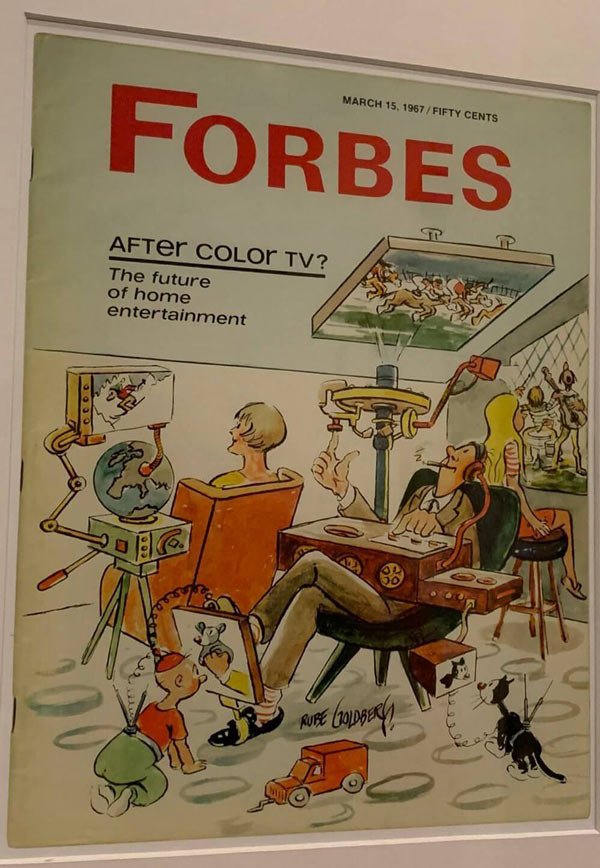National Museum of American Jewish History
If you’ve been hanging around Her Bags Were Packed for a while, you probably know that I am passionate about trying to keep the traveler’s spirit alive, even when I am at home.
To keep that spirit alive, I am intentional about exploring other neighborhoods, taking day trips, going to parks, trying new (to me) restaurants, visiting museums, and remaining curious. But this can be difficult at times because often life just happens.
It’s easy to say you want to do something, but when it’s in your own backyard and you’re exhausted from a long day at work or family obligations, it’s easier to keep putting that thing off because it doesn’t feel urgent. Instead we tell ourselves, “There’s always next weekend…” And, yet, we often don’t get around to it. Life keeps happening.
So at the beginning of the year, I made a list of all the local things I want to do and put dates on my calendar for each of them. (Full disclosure, I’ve already skipped ⅔ of them because “I’m exhausted and will go next month…”)
The first activity of the year was visiting the National Museum of American Jewish History on Saturday, January 5th which was a free Museums on Us Day.
I’d been wanting to check out the NMAJH for many years, but every time I planned to go something came up. And truth be told, I think I was a little nervous to visit because I thought it might be really sad and depressing. It was pretty ignorant for me to to assume the museum would be focused on horrors, like the Holocaust, as opposed to the incredible contributions Jews have made to American culture and the world.
The museum does a fantastic job of telling the story of immigration, the American Dream, and the way in which people of Jewish descent have impacted entertainment, business, civil rights, and more.
The museum is vast, informative, moving, inspiring and even entertaining, at times. I am grateful that I finally got around to visiting and plan to return. I had many takeaways throughout the day, but these are three that I want to share with you.
National Museum of American Jewish History - Rube Goldberg Forbes Cover - Her Bags Were Packed
Rube Goldberg’s Forbes Cover
While I was there, the museum had a special exhibit all about Rube Goldberg. He was a fascinating cartoonist, inventor, author, artist, engineer and more. He lived from 1883 to 1970 and is best known for his comic strips and cartoons that depicted complicated, over-the-top machines performing very basic tasks. The man led a fascinating and accomplished life. If you do not know about him, he is worth learning about. One piece of his work that most stuck with me is the cover of a 1967 Forbes magazine that asks about “the future of home entertainment” after color TV. The image shows a family, all in the same room, ignoring each other while watching their own preferred shows on their own personal devices. Even the babies and pets have their own personal devices.
I imagine 52 years ago it was comical. After all, it looks as though it could be part of The Jetsons; but, for me, it felt too real to be entertaining. It left me asking, “If this isolated state of living is where we are currently, then what does the future hold now?”
Closing America’s Doors
Another exhibit, Closing America’s Doors, talks about the ways that “fears of foreign revolutionaries and growing anti-immigrant sentiments” in the 1920s led to Congress passing the Johnson-Reed Act which “almost completely shut America’s doors” to immigrants. Antisemitism was sweeping through the country, mostly “stoked by fear.” And with this, hate groups, like the KKK, were emboldened and membership surged.
This exhibit stuck out to me because it felt so familiar to currents events, leading the public by fear and designing government policies that shut out anyone who threatens, as the sign read, “America’s ethnic balance” or could potentially “corrupt the nation’s values.”
American Ambivalence
Since the NMAJH is focused on American history, the exhibit that speaks about World War II and the Holocaust looks at America’s role and includes stories of the missed opportunities we had to intercede and save lives.
One such story is that of the St. Louis, a “luxury liner,” headed for Cuba. There were 937 passengers onboard, mostly Jewish refugees with visas that they’d paid hundreds of dollars for (the equivalent of $3,000 to $5,000 today). When they arrived in Havana, despite having the proper paperwork, the Cuban government refused to allow them to disembark out of fear of being overrun by refugees. The ship’s captain then attempted to take the passengers to Miami, but again was turned away and sent back for Germany. After incredible negotiations, Great Britain, France, Belgium and the Netherlands agreed to accept the refugees, but within the year all of these countries, with the exception of Britain, were occupied. Approximately 250 of the St. Louis' passengers were killed during the Holocaust.
Just like with the Closing America’s Doors exhibit, I felt the parallel to today’s refugee crisis and remembered my visit to the Anne Frank House last year and wondered, “How many more Anne Franks are out there?”
If you’re interested in visiting the National Museum of American Jewish History, they are conveniently located at 101 South Independence Mall East in Philadelphia, PA by the Liberty Bell, Independence Hall, the Constitution Center, and much more. For details on hours and the price of admission, visit their website.
And don’t forget that you can get in for free on the first full weekend of each month with a Bank of America or Merrill Lynch debit or credit card through the Museums on Us program.


